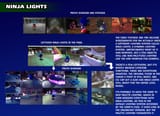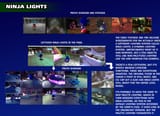>>719970929
>>719979347
>>719980159
Sonic Adventure and Sonic Adventure 2 were built specifically for the Sega Dreamcast's SH4 CPU.
Dreamcast goes all out on transparency and lighting, supports 8-bit destination alpha blending with 24-bit sourcing 32-bit z-buffer, Saturn and Dreamcast diffuse+specular lightning based on palette indices, Dreamcast used tile layered deferred rendering which supported order independent transparency. the Egg Carrier in Sky Chase appears to be rendered using the functions that ignore palette lighting, and thus it is using Ninja Lights set up in the SL file.
Technically SA1 does have dynamic lighting effects, but you can't see them because they almost always get overridden with palette lighting. They were certainly meant to be in the game at some earlier point, though.
Sonic Adventure 1 was highly downgraded in terms of lighting on on the GC. SA2 lacked a bunch of shadowing effects which used the DC's modifier volumes. SA2 DC abused the Dreamcast's volumetric fog features for some interesting effects, like security alarms (Iron Gate, Flying Dog, Egg Quarters) and approximated "rain waves" (White Jungle). These effects are gone in SA2B, replaced with full-screen overlays (Flying Dog, Egg Quarters) or with a rotating vertex light (Iron Gate)
Sega changed SA1's palette based lighting to specular lighting in DX GC port and they barely even used it. SA2 CnkMultiDraw does support Vertex color + Lighting though used in Events
The porting team likely ran into problems implementing palette lighting, so they figured it would be easier to just update everything that didn't work immediately after they were brought over to SADX. Even SA2B doesn't use specular in the same way the DC version uses it.
That's what happens when the Dreamcast is the only system with hardware support for OIT lol



